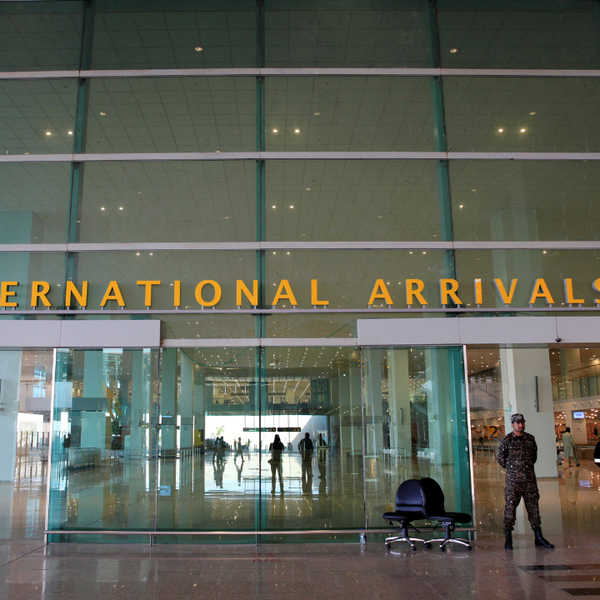Five years of soaring expenditure and stalled development in Pakistan
A look inside Pakistan’s budget reveals a lopsided spending mix and shrinking fiscal space for development
Nida Gulzar
Research Analyst
A distinguished economist with an M. Phil. in Applied Economics, Nida Gulzar has a strong research record. Nida has worked with the Pakistan Business Council (PBC), Pakistan Banks' Association (PBA), and KTrade, providing useful insights across economic sectors. Nida continues to impact economic debate and policy at the Economist Intelligence Unit (EIU) and Nukta. As a Women in Economics (WiE) Initiative mentor, she promotes inclusivity. Nida's eight 'Market Access Series papers help discover favourable market scenarios and export destinations.

Shutterstock
In five years, Pakistan’s federal expenditure has grown by more than 55%, jumping from PKR 11.1 trillion in FY22 to PKR 17.2 trillion in the fiscal year 2024-25 (FY25). But the increase alone doesn’t tell the story—where the money is going matters far more.
A closer look reveals a troubling reality: most of the increase is being eaten up by interest payments, defense, and pensions, while development spending—key to long-term growth—has steadily declined as a share of the economy.
This feature unpacks the composition of government expenditure over the last five years and highlights the trade-offs, fiscal risks, and policy gaps that shape today’s federal budget.
Where the money went
Interest payments—the budget’s deepest hole
Interest payments have surged from PKR 3.1 trillion in FY22 to PKR 8.2 trillion in FY26, now accounting for over 6% of GDP. This sharp rise reflects the impact of persistently high inflation, tight monetary policy, and a significant increase in total government debt, which has risen from PKR 38.7 trillion in FY22 to PKR 76.1 trillion in 11MFY25, marking a 96.5% increase over five years.
As a result, the overall cost of borrowing has grown substantially, placing considerable pressure on fiscal space and limiting development spending.
With total public debt nearing PKR 76 trillion, the implied effective interest cost hovers around 10.7%.
Interest payments have surged to consume nearly 74.5% of Pakistan’s net federal revenues in FY25, sharply constraining fiscal space for development and public investment. This marks a significant deterioration from FY22, when the share stood at 45.7%.
Defense spending—modest but rising
Defense allocations reached PKR 2.55 trillion in FY26, or 1.9% of GDP, the highest level in over a decade. This reflects the country’s complex security landscape and rising operational needs, especially after renewed tensions on the eastern border.
While Pakistan spends less on defense relative to its GDP compared to peers like India, the increase is significant given its tight fiscal envelope.
Pensions—a growing structural liability
Pension expenditures are projected to exceed PKR 1 trillion in FY26. Pakistan operates an unfunded, defined-benefit system, meaning current revenues pay for current retirees, with no assets set aside for future obligations.
World Bank analysis clearly states that the federal civil service pension scheme in Pakistan is non‑contributory and benefits are paid from the current budget, i.e., no assets are set aside in advance.
Most countries have shifted to funded, defined-contribution systems where each employee builds their own pension pot. Pakistan's failure to reform this setup adds long-term stress to already fragile finances.
Development expenditure—the quiet retreat
Once a pillar of economic transformation, the public sector development program (PSDP) spending has shrunk to just 0.77% of GDP, its lowest level in a decade. Just five years ago, it hovered near 1.5-2% of GDP.
For the past 2-3 years, PSDP allocations have consistently been underutilized, a sharp departure from the pre-FY21 trend when they were generally met.
Why the shortfall? Mid-year revenue gaps often force development cuts.
Post-18th amendment, many development responsibilities devolved to provincial governments.
Provincial surpluses, meant to balance the federal deficit, often come at the expense of local development. In recent years, Pakistan’s federal government, under IMF agreements, set fiscal deficit targets (e.g. 6.5%; 5.9%; 4.9% of GDP). To meet these, it asked provinces to deliver cumulative surpluses of PKR 650-850 billion per year. Provinces met these targets not by increasing revenues, but by cutting back on development spending.
India allocates 2.5% of GDP to federal capital spending. Meanwhile, Bangladesh targets 2.8% of GDP for development.
Pakistan lags behind both in allocation and execution.
Budget discipline, but at what cost?
Pakistan’s FY26 budget is a poster child of IMF-guided austerity, featuring a record-low deficit and a third consecutive year of primary surplus. But underneath the fiscal discipline lies a spending pattern that increasingly favors survival over progress.
Unless structural issues—especially interest costs, pension reform, and development underfunding—are addressed, Pakistan risks institutionalizing a low-growth, high-burden economy, where the state spends just enough to stay afloat but too little to truly move forward.
Fiscal consolidation is necessary, but it must be paired with structural reforms. Otherwise, Pakistan will keep paying off the past... at the cost of its future.







Comments
See what people are discussing